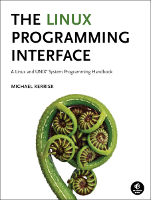Function list (Bold in this list means a function is not static)
/* view_symlink.c
Demonstrate the use of readlink() and realpath() to read and display
the contents of a symbolic link.
*/
#include <sys/stat.h>
#include <limits.h> /* For definition of PATH_MAX */
#include "tlpi_hdr.h"
#define BUF_SIZE PATH_MAX
int
main(int argc, char *argv[])
{
struct stat statbuf;
char buf[BUF_SIZE];
ssize_t numBytes;
if (argc != 2 || strcmp(argv[1], "--help") == 0)
usageErr("%s pathname\n", argv[0]);
/* User lstat() to check whether the supplied pathname is
a symbolic link. Alternatively, we could have checked to
whether readlink() failed with EINVAL. */
if (lstat(argv[1], &statbuf) == -1)
errExit("lstat");
if (!S_ISLNK(statbuf.st_mode))
fatal("%s is not a symbolic link", argv[1]);
numBytes = readlink(argv[1], buf, BUF_SIZE - 1);
if (numBytes == -1)
errExit("readlink");
buf[numBytes] = '\0'; /* Add terminating null byte */
printf("readlink: %s --> %s\n", argv[1], buf);
if (realpath(argv[1], buf) == NULL)
errExit("realpath");
printf("realpath: %s --> %s\n", argv[1], buf);
exit(EXIT_SUCCESS);
}
Download dirs_links/view_symlink.c
Note that, in most cases,
the programs rendered in these
web pages are not free standing:
you'll typically also need a few other source files
(mostly in the lib/
subdirectory) as well.
Generally, it's easier to just
download the entire
source tarball
and build the programs with make(1).
By hovering your mouse over the various hyperlinked
include files and function calls above,
you can see which other source files
this file depends on.

